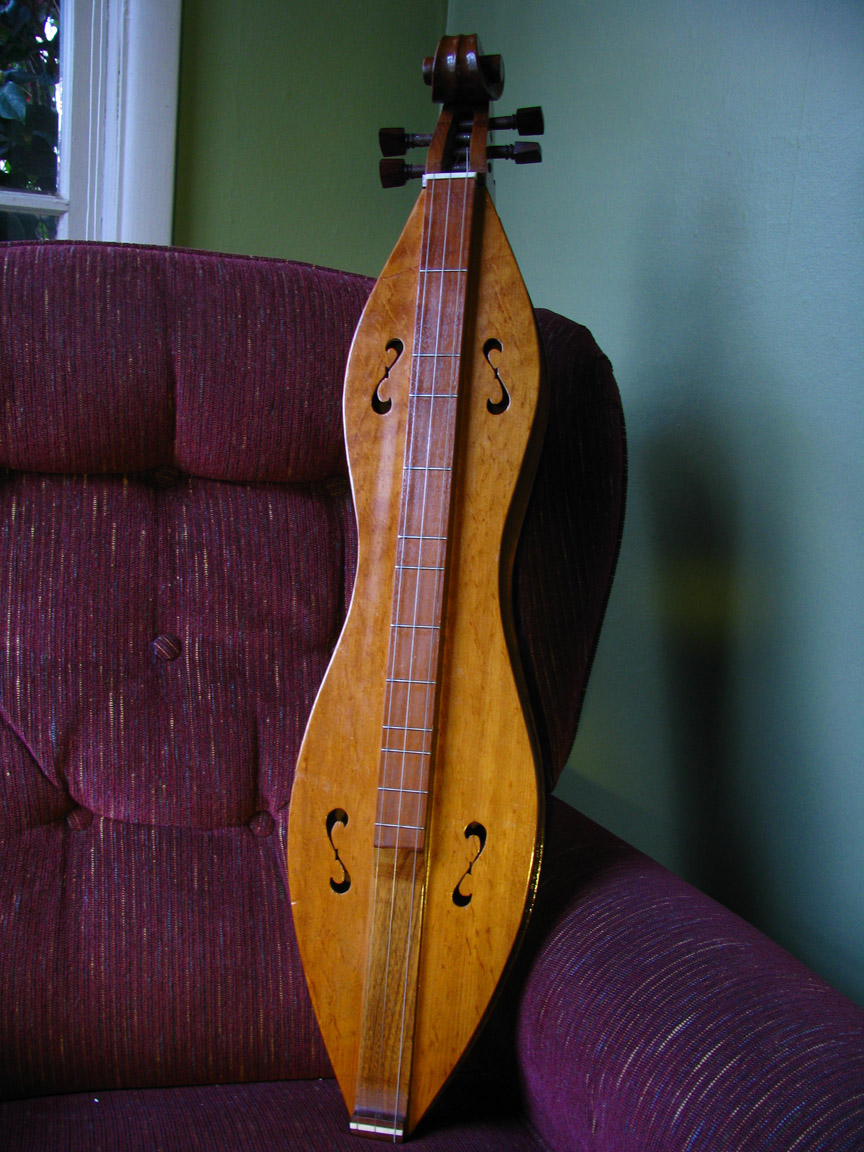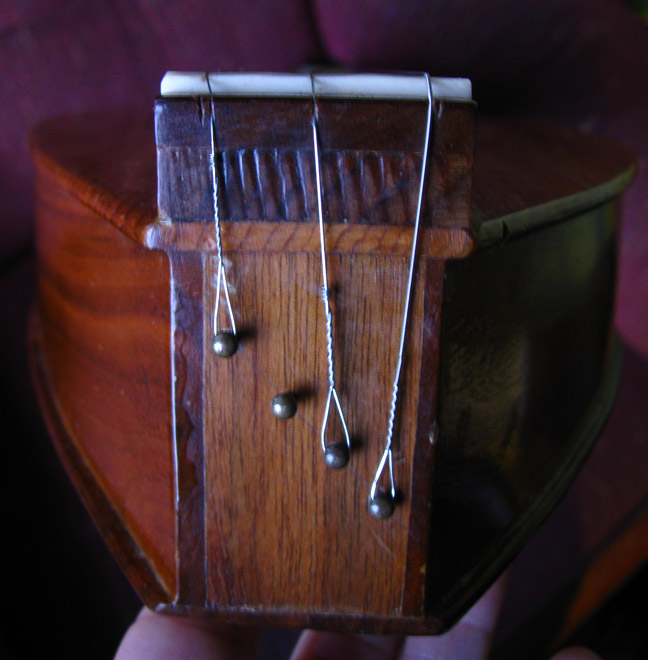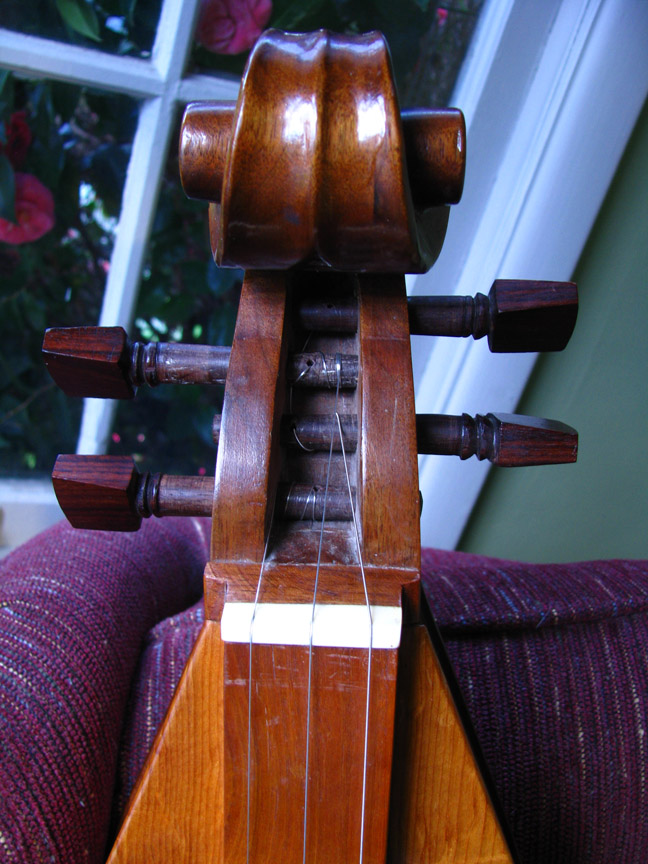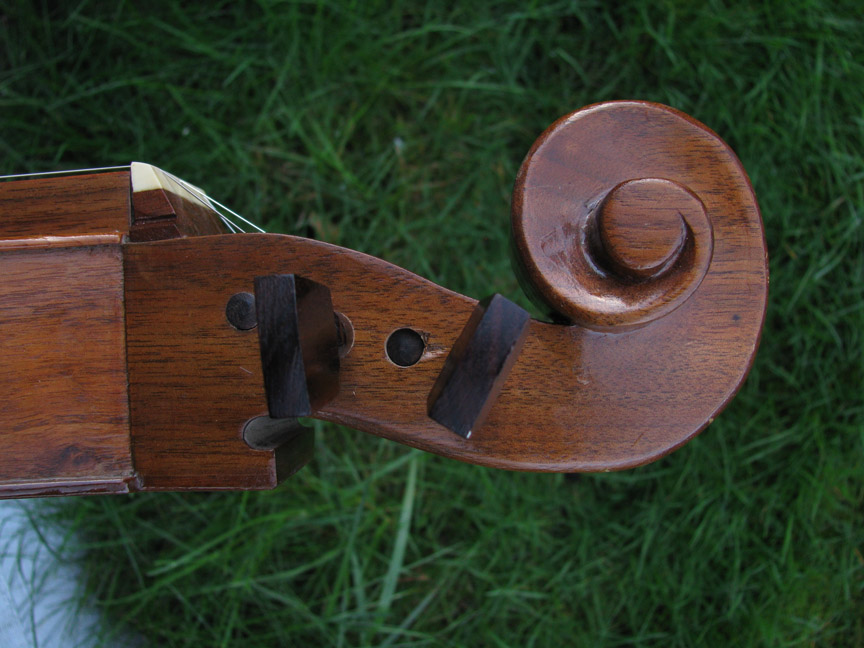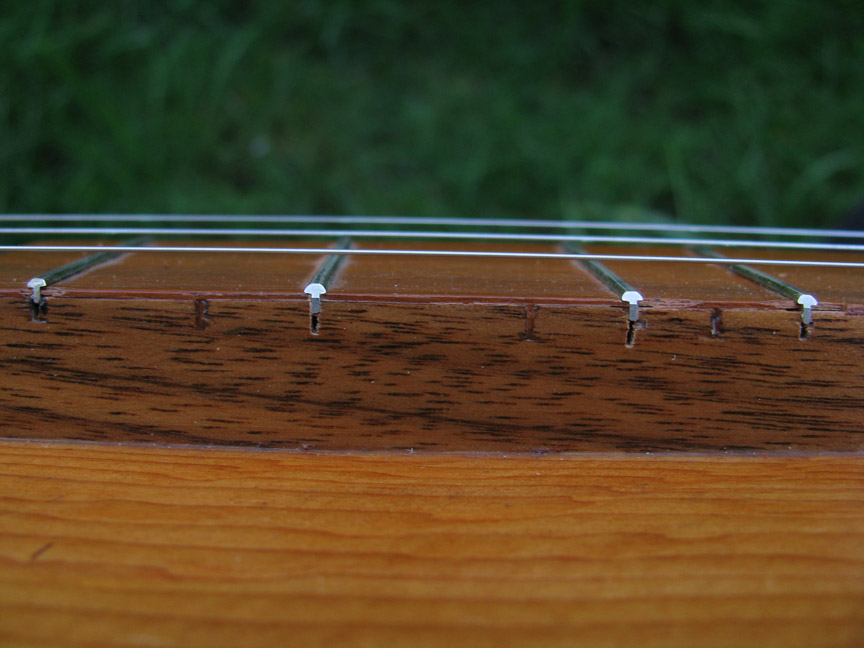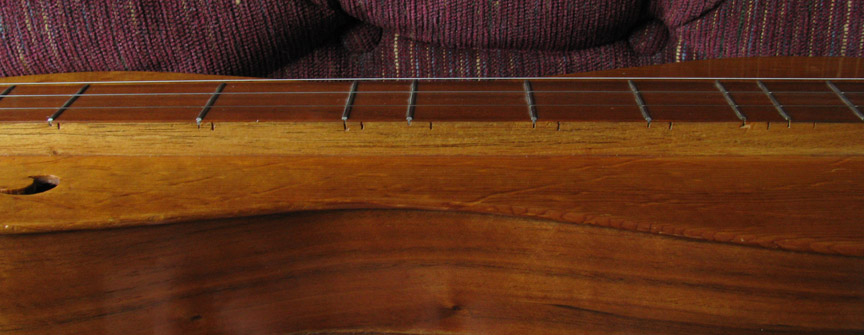To answer your question about possible woods used, I"d say mostly walnut, with some pretty figured (burl or crotch figure) bookmatched walnut on the back, and an unknown wood --possibly spruce or similar softwood--on the top. The tuning pegs look like Brazilian rosewood to me. It looks like the original fret spacing on the fretboardwas cut inaccurately, and an overlay was glued on and new fret slots cut in it. The nut and bridgelook to berecent replacements for what was originally a paired melody string setup. Note the grooves worn in the tailblock.
What surprises me is the different levels of finish and craftsmanship evident in this dulcimer. Somebody who takes the time and effort to carve a scroll, fit friction pegs to the holes and bookmatch beautiful figured wood on the back should show similar care in doing the tailpiece joinery. Maybe some of a fine dulcimer was rebuilt by an amateur?

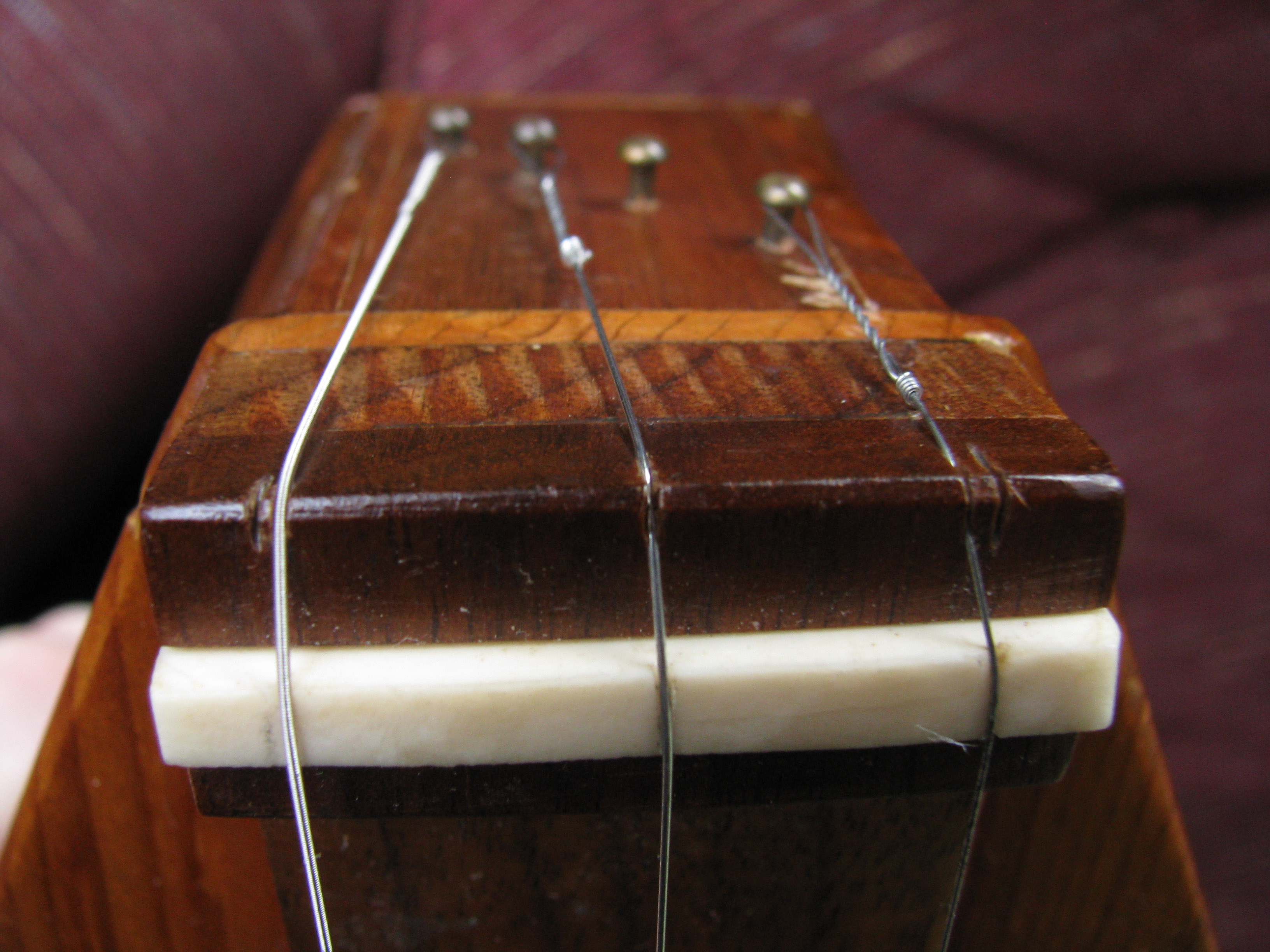
 have you tried looking in the sound holes to see if there writing on who made it?
have you tried looking in the sound holes to see if there writing on who made it?